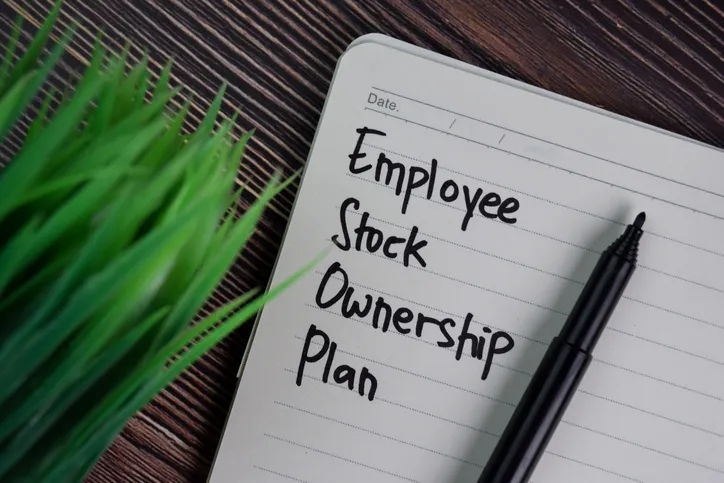An Employee Stock Ownership Plan (ESOP) provides employees with an ownership interest in their company, but accessing those funds follows strict distribution rules. These rules govern when payouts can begin, the form they take and how they are taxed. Understanding the timelines, options and tax implications helps you evaluate the value of an ESOP distribution and plan for retirement or other financial goals.
A financial advisor can help you determine how this benefit fits your overall retirement strategy.
How ESOP Distributions Work
An ESOP rewards employees with ownership in their company. However, you generally can’t access those benefits immediately. Qualifying events such as retirement, resignation, termination, disability, or death typically trigger ESOP distributions. Federal law sets guidelines for when payouts must begin, often within a set period after you leave the company. Companies have flexibility in how and when they handle the distribution so you likely won’t receive the full value in one pay out.
The law requires companies to begin ESOP distributions within one year of retirement or, in other cases, no later than the sixth year after leaving. Payments are often spread over several years, with larger balances paid in installments and smaller ones sometimes as a lump sum. The schedule depends on company policy and account size, allowing the company to manage cash flow while meeting legal rules. Knowing your company’s timeline can help you plan for how and when you’ll receive your payout.
Your ESOP distribution can come in the form of company stock, cash, or a combination of both. If you receive stock, you can sell it back to the company when you retire. You can also sell it on the open market if you’re working for a publicly-traded company.
ESOP Distribution Rules

ESOP distribution rules are set by federal law and your company’s plan documents. These determine when you can begin receiving your payout. Generally, you become eligible after a “triggering event” such as retirement, termination of employment, disability or death. Some plans also specify a minimum vesting period. This means you must work a certain number of years before you have access to the full value of your account. These rules help balance employee benefits with the company’s operational needs.
The law requires companies to start ESOP payouts within one year of retirement, disability, or death. For other separations, payouts must begin no later than the sixth year after leaving. Companies can meet this rule with staggered installments rather than a lump sum and larger accounts may be paid out over several years. However, installment payment schedules generally can’t exceed five years once they start. These rules ensure that former employees receive their benefits in a reasonable timeframe.
Companies may pay distributions in cash, company stock, or a combination of both. If you receive stock from a privately held company, federal rules require the company to offer a “put option.” This requires the company to buy shares back at fair market value. Your plan’s rules will outline the default method and whether you have a choice in how you receive your payout.
Certain situations can alter standard ESOP distribution rules. For example, companies reduce their financial burden by paying large balances over a longer period. And if you receive early distributions before age 59.5 it may trigger additional tax penalties. Participants who leave before full vesting will forfeit the unvested portion of their account. Understanding these details, and how they apply to your specific plan, can help you avoid surprises when it’s time to collect your ESOP benefits.
How ESOP Distributions Are Taxed
ESOP distributions are subject to federal income taxes, and in most cases, state taxes as well. The exact tax treatment depends on whether you receive cash or stock, your age at distribution, and whether you roll the funds into another retirement account. If you take the payout as a lump sum in cash without rolling it over, the IRS will tax the entire amount as ordinary income in the year you receive it. This can significantly increase your tax bill if the distribution pushes you into a higher tax bracket.
If you receive your ESOP distribution before age 59½ and don’t roll it into a qualified retirement account like an IRA or 401(k), you’ll generally owe a 10% early withdrawal penalty on top of regular income taxes. There are exceptions for certain circumstances, such as disability or death, but these are narrowly defined under IRS rules. Careful planning can help you avoid penalties while still accessing your funds when needed.
When distributions are made in the form of company stock, you may qualify for favorable tax treatment through net unrealized appreciation (NUA). With NUA, you pay ordinary income tax only on the stock’s original cost basis at the time of distribution. Any increase in value since purchase is taxed at the lower long-term capital gains rate when you eventually sell the shares. This strategy can reduce your overall tax burden but requires meeting specific IRS requirements.
Payment Options for an ESOP Distribution
When it comes time to take an ESOP distribution, participants generally face several payout options, each with different financial and tax effects:
- Rollover to an IRA or 401(k): You can roll your ESOP distribution into another qualified retirement account to defer taxes until you make withdrawals. This option helps preserve your retirement savings and avoid early withdrawal penalties if you’re under 59½. A rollover is especially beneficial if you don’t need immediate access to your funds.
- Lump sum payment: This option provides your entire ESOP balance in one payment. It can be appealing if you want immediate access to funds for large expenses, investments, or debt repayment. However, receiving the full amount at once may trigger a higher tax bill if it pushes you into a higher income bracket.
- Installment payments: Instead of getting your distribution all at once, you can receive it in smaller, regular payments over several years. This approach can help spread out your tax liability and provide a steady retirement income stream. Many companies use this method for large balances to manage their cash flow while still meeting payout requirements.
- Stock distribution: You may receive company stock instead of cash, which can open the door to special tax treatment through net unrealized appreciation (NUA). If the company is privately held, you’ll likely have the option to sell shares back to the company at fair market value. This method can be tax-efficient but requires careful planning to manage timing and market risk.
Bottom Line

An ESOP can provide significant value, but the benefit depends on how distributions, taxes and payout options are managed. Knowing when and how you can access your funds allows you to align your ESOP with long-term financial goals. With planning and professional advice, your ownership stake can support your retirement income.
Investment Planning Tips
- A financial advisor can recommend investment strategies and help manage taxes for your portfolio. Finding a financial advisor doesn’t have to be hard. SmartAsset’s free tool matches you with vetted financial advisors who serve your area, and you can have a free introductory call with your advisor matches to decide which one you feel is right for you. If you’re ready to find an advisor who can help you achieve your financial goals, get started now.
- Asset allocation is a prime concern for investment and portfolio construction. SmartAsset’s asset allocation calculator can help you select an asset mix that fits your personal risk tolerance and investment style.
Photo credit: ©iStock.com/designer491, ©iStock.com/Miljan Živković, ©iStock.com/syahrir maulana
